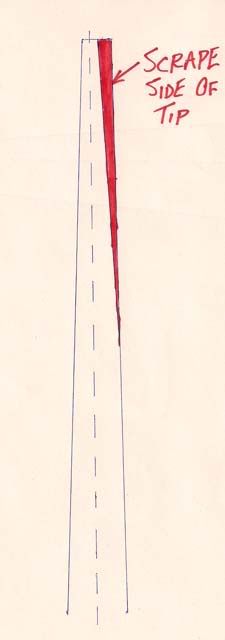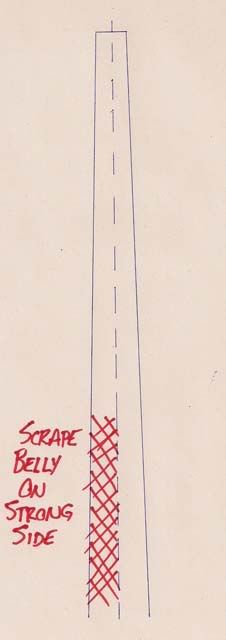This is a good topic. It got me wondering if maybe there was something in TBB that could explain this whole process better, and I was surprised that I couldn't find anything in any of the 4 volumes. The tillering chapter in volume one basically says just live with it

I think some of the confusion about which side to remove wood from is due to the fact that you actually CAN remove wood from either side. Let me try to explain my understanding, with some crude Homer Simpson type drawings I scanned.
Here's an example. When strung, this limb is twisting to the right of the imaginary center line. This means that the right half of the limb is the weak side, the left half is the strong side.
Problem (Before Fix)
Now,
if you have extra width on the tips, you can do like George suggested, and remove wood from the right
side, which will in effect move the string to the left, closer to the centerline. This moves the tip closer to center, at the cost of narrowing it (potentially causing a whip tiller) and not doing much to move the rest of the limb towards the center. Notice here you are removing wood from the weak side of the limb:
Solution #1 - Remove wood from the side of tip
If you
can't afford to narrow your tips, you can actually bring the majority of the limb back to the center by removing wood from the belly on the strong half of the limb, further away from the tip, as shown below. All you have to remember is that the wood will bend toward the weak side, and to correct it you have to scrape the belly on the strong side. I realize this is just a drawing and not actually proof, but for those who are skeptical, just try it next time and you'll see for yourself
 Solution #2 - Remove wood from the belly, midlimb on the strong side
Solution #2 - Remove wood from the belly, midlimb on the strong side